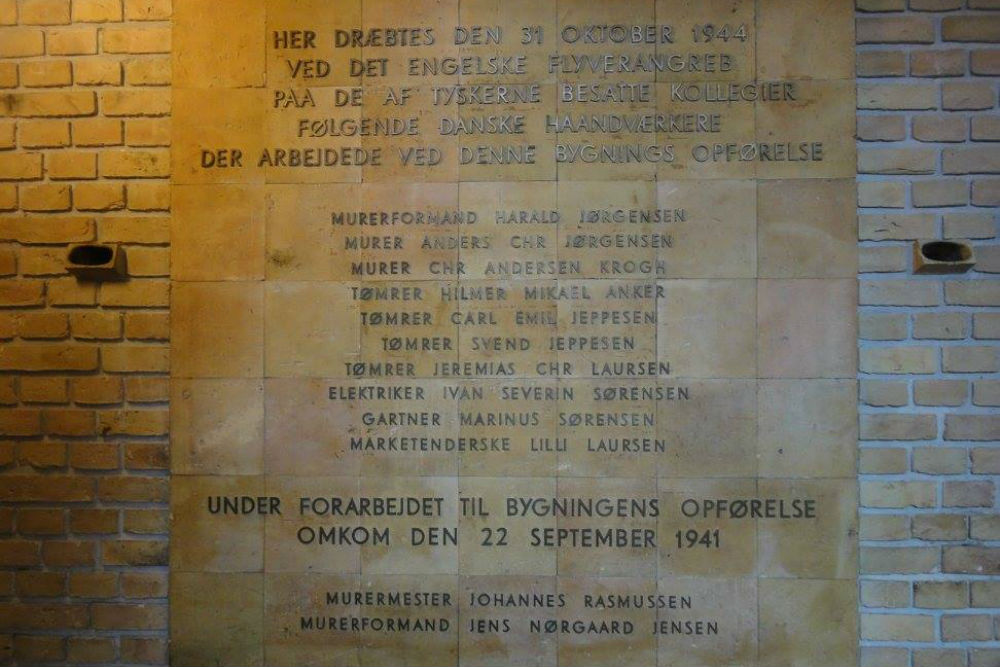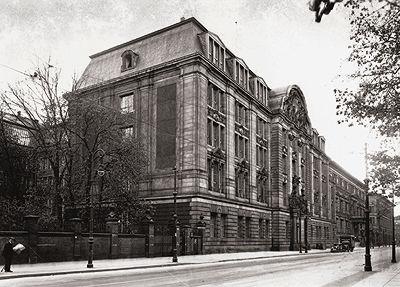War Memorial Aarhus
These memorial plaques are found inside and outside the university's main building of Aarhus.
On the 31st October 1944, 25 Mosquitoes from 140 Wing Royal Air Force (RAF) of the 2nd Tactical Air Force, bombed the Gestapo headquarters at the University of Aarhus, residence halls 4 and 5.
In 1944, the Gestapo was a major threat to the Danish resistance movement in Jutland and so the resistance appealed to the Royal Air Force to bomb the Gestapo’s archives in the residence halls.
It was eventually decided that the attack would take place in four waves, with about one minute separation in between: the first waves would carry regular bombs to blast the buildings containing the Gestapo offices open, while the last waves would attack with incendiary bombs to maximize the damage to the Gestapo archives. The bombs were set to explode with a delay of eleven seconds after being dropped, to minimise the risk of them damaging subsequent waves of bombers. It was also decided that it would take place on a workday, between 11:30 and 12:00 a.m., since few Danish prisoners would be held in the offices at this time, as most of them would have been escorted back to their cells elsewhere on campus for lunch, while the majority of the Gestapo staff would be present and preparing for the lunch break at 12:00 a.m.
Though the bombing was precise, destroying dorms 4 and 5 and doing considerable damage to the Langelandsgade barracks, a couple of bombs strayed from their targets. Most notably, the university's main building, which was undergoing construction at the time of the bombing, was accidentally struck by a bomb that had somehow managed to skip down the halls of the building, killing about ten members of the construction crew and injuring the chief architect, C. F. Møller. Most of the Gestapo archives, including many of the files on the Danish resistance, were destroyed in the attack.
Do you have more information about this location? Inform us!
Source
- Text: Michelle Braganza
- Photos: Michelle Braganza






